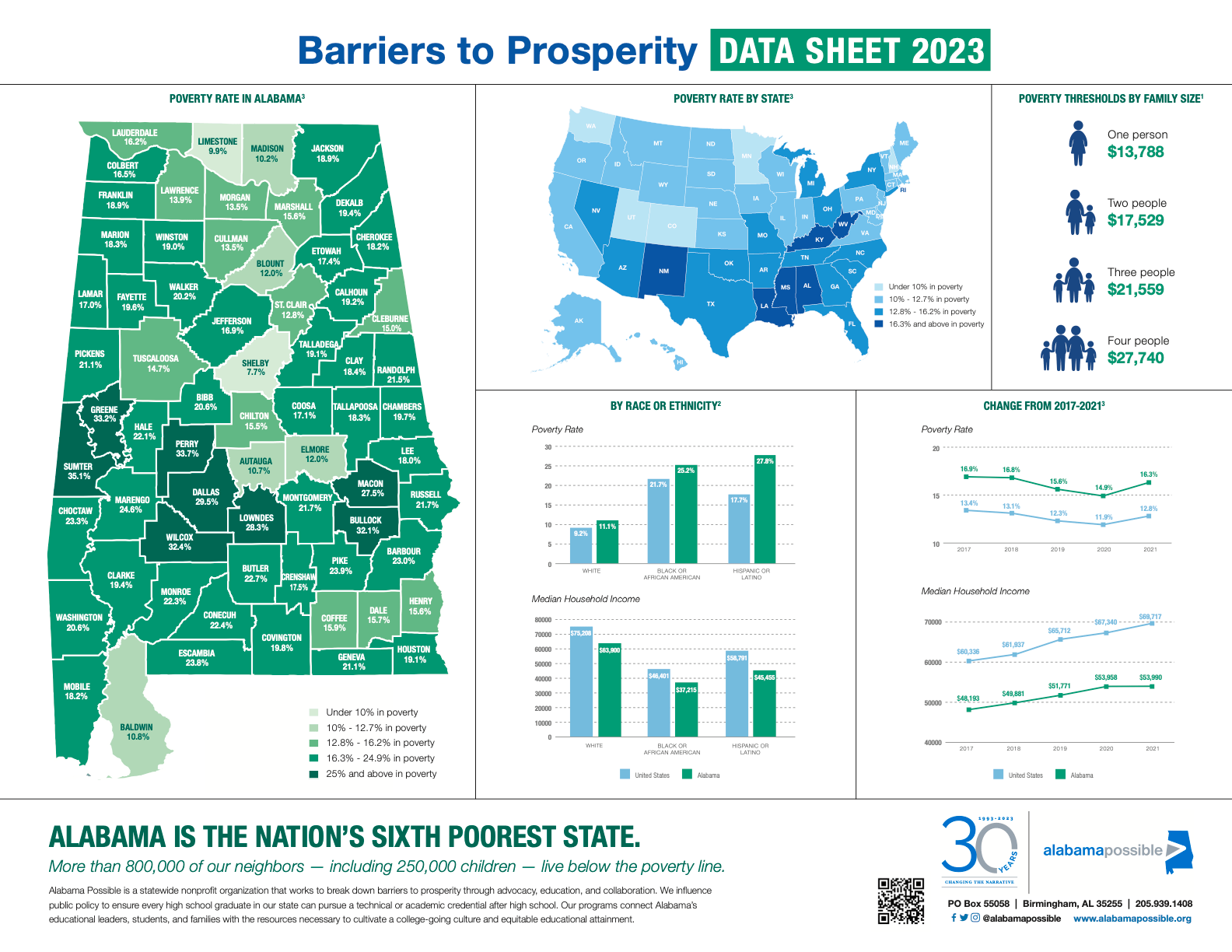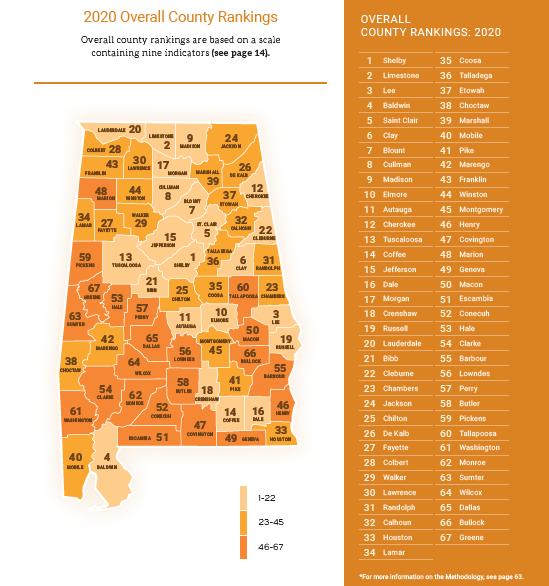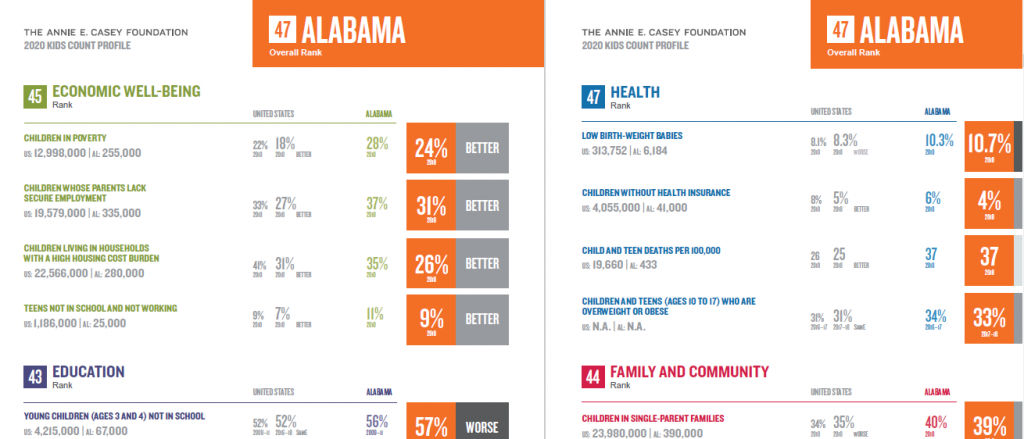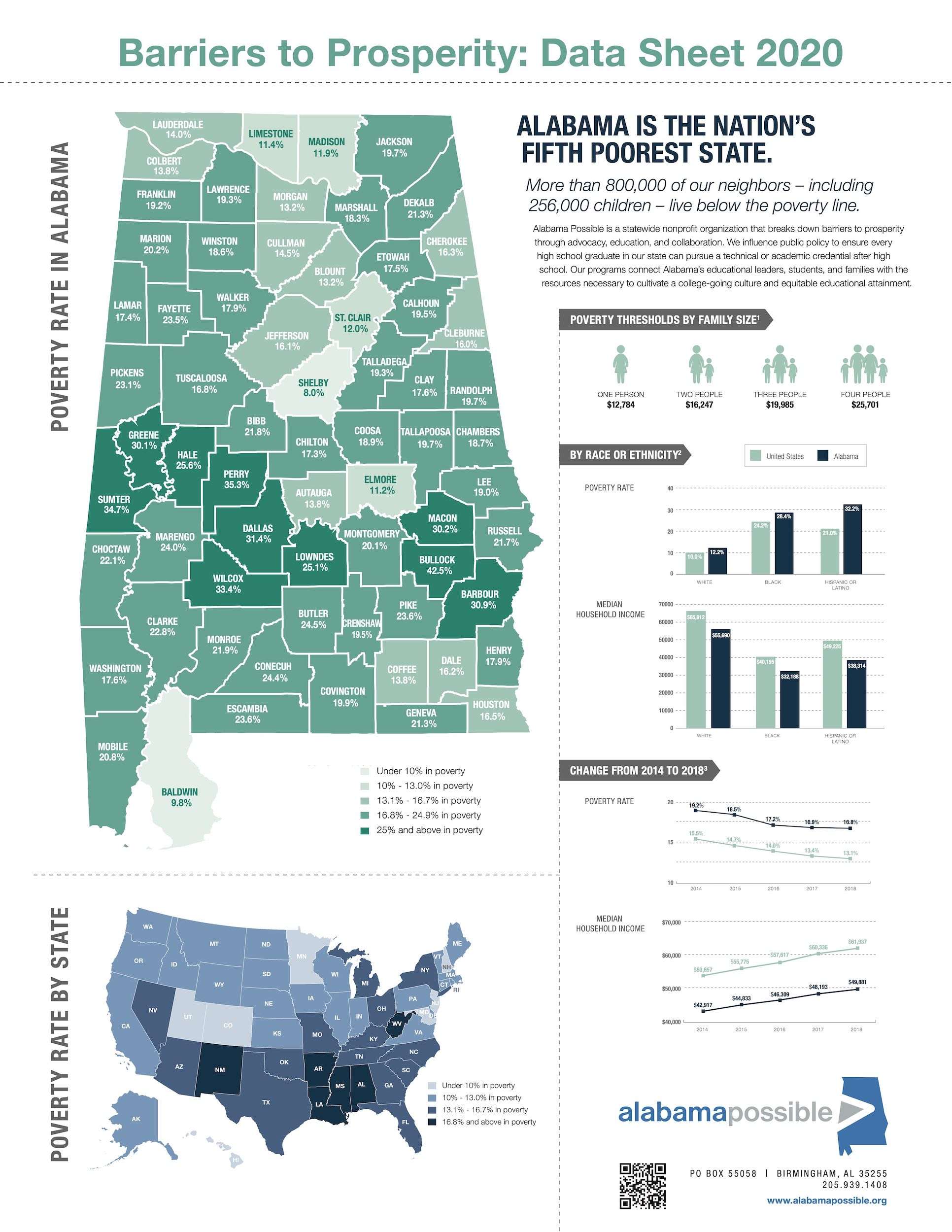Alabama, located in the southern part of the United States, faces various challenges in healthcare and education as it grapples with a high poverty rate. Despite these difficulties, the state offers opportunities for off-grid living, with cheap land, low property taxes, and incentives for solar and wind power systems. However, its humid subtropical climate poses a challenge, along with high humidity, insect populations, and water contamination. While Alabama boasts a diverse wildlife population and lower cost of living compared to the national average, the poor healthcare system and higher crime rate can offset these advantages. With a focus on self-sufficiency and compliance with local regulations, off-grid living in Alabama has the potential to thrive amidst the state’s unique challenges.

Poverty Rate in Alabama
Alabama, located in the southern part of the United States, faces a significant challenge when it comes to poverty. The state has a high poverty rate, which affects the quality of life for many residents.
Statistics on poverty rate in Alabama
The poverty rate in Alabama has consistently remained higher than the national average. According to data from the U.S. Census Bureau, the poverty rate in Alabama was 16.8% in 2019, while the national average was 10.5%. This means that a considerable portion of the population in Alabama struggles to meet their basic needs and has limited access to resources and opportunities.
Factors contributing to high poverty rate
Several factors contribute to the high poverty rate in Alabama. One of the key factors is the limited availability of well-paying job opportunities. The state has a lower median household income compared to the national average, making it difficult for individuals and families to make ends meet.
Additionally, Alabama has a lower educational attainment rate, with a significant portion of the population having lower levels of education. This lack of education can limit their employment prospects and further perpetuate the cycle of poverty.
Another contributing factor is the racial and income inequality prevalent in the state. Minority groups, particularly African Americans, tend to have higher poverty rates and face systemic barriers that limit their socioeconomic mobility.
Impact of high poverty rate on healthcare and education
The high poverty rate in Alabama has a significant impact on healthcare and education outcomes. Many individuals living in poverty struggle to access quality healthcare services, leading to poorer health outcomes overall. This is exacerbated by the shortage of healthcare facilities and professionals in certain areas of the state.
In terms of education, the high poverty rate often translates into underfunded schools and limited resources for students. This can lead to lower academic achievement and hinder the development of necessary skills for future success. The lack of access to quality education perpetuates the cycle of poverty, making it difficult for individuals to break free from its constraints.
Efforts to alleviate poverty in Alabama should prioritize improving access to job opportunities, addressing racial and income inequality, and investing in healthcare and education systems to provide equal opportunities for all residents.
Challenges in Healthcare
The healthcare system in Alabama faces several challenges that impact the overall well-being of its residents.
Overview of healthcare system in Alabama
Alabama’s healthcare system is characterized by limited access to care, a shortage of healthcare professionals, and high healthcare costs. The state has a higher uninsured rate compared to the national average, which means that many individuals lack access to necessary medical services.
Limited access to healthcare facilities
One major challenge in Alabama is the limited access to healthcare facilities, especially in rural areas. Many residents have to travel long distances to access medical care, which can be a significant barrier, particularly for those without reliable transportation.
Shortage of healthcare professionals
Alabama also faces a shortage of healthcare professionals, including doctors, nurses, and specialists. The limited workforce exacerbates the challenges in accessing care, as there are not enough healthcare providers to meet the demand.
High healthcare costs
The cost of healthcare in Alabama is another significant challenge. High healthcare costs can be a barrier for many individuals, especially those living in poverty. The lack of affordable healthcare options can result in delayed or inadequate medical treatment, further impacting health outcomes.
Impact of poor healthcare on poverty rate
The poor healthcare system in Alabama contributes to the high poverty rate in the state. Limited access to healthcare services, combined with high healthcare costs, leaves many individuals unable to address their health needs. This can lead to worsening health conditions, increased medical expenses, and reduced productivity, further perpetuating the cycle of poverty.
Efforts to improve healthcare in Alabama
Efforts to improve healthcare in Alabama include expanding access to care in underserved areas, attracting and retaining healthcare professionals, and advocating for comprehensive healthcare reform at the state and national levels. These efforts aim to address the systemic challenges faced by the healthcare system and improve the overall health and well-being of Alabama residents.

Challenges in Education
Education in Alabama faces numerous challenges that hinder the academic success and future prospects of its students.
Overview of education system in Alabama
The education system in Alabama is characterized by low funding, inequality, and a lack of resources and infrastructure. These challenges have a significant impact on students’ ability to receive a quality education.
Low funding for education
One major challenge in Alabama is the low funding for education. The state consistently ranks near the bottom in terms of per-pupil spending, which limits the resources available to schools and teachers. This lack of funding can lead to outdated textbooks, limited extracurricular activities, and inadequate support services, hindering students’ learning experiences.
Inequality in education
In Alabama, there is a significant disparity in educational opportunities among different communities. Students in low-income areas often face more challenges in accessing quality education due to limited resources and a lack of support. This inequality perpetuates the cycle of poverty and further hampers social mobility.
Lack of resources and infrastructure
Many schools in Alabama lack the necessary resources and infrastructure to provide a quality education. This includes outdated facilities, overcrowded classrooms, and a lack of technology and teaching materials. The absence of these resources can hinder the learning experience and limit students’ exposure to modern educational tools and methods.
Impact of poor education on poverty rate
The poor education system in Alabama has far-reaching consequences. Students who do not receive a quality education may struggle to develop key skills and knowledge needed for employment opportunities. This can result in limited job prospects, lower wages, and a higher likelihood of experiencing poverty.
Efforts to improve education in Alabama
Efforts to improve education in Alabama include increasing funding for schools, especially in low-income areas, and providing additional support to students in need. Additionally, initiatives aimed at reducing the achievement gap and improving school infrastructure can help create a more equitable and accessible education system for all students in the state.
Off-Grid Living in Alabama
Off-grid living, which refers to living without dependence on traditional public utilities such as electricity and water supply, is gaining popularity in Alabama. The state offers several advantages for those looking to embrace a more self-sufficient lifestyle.
Advantages of off-grid living in Alabama
Alabama’s land prices are relatively cheap, making it more affordable for individuals to purchase property and build their off-grid homes. Additionally, the state has low property taxes, which can be appealing to those seeking a more cost-effective living arrangement.
Factors contributing to its popularity in the state
The availability of cheap land and low property taxes are significant factors contributing to the popularity of off-grid living in Alabama. Many individuals are drawn to the idea of owning their land and having the freedom to live sustainably and independently.
Legal aspects of off-grid living in Alabama
Off-grid living is legal in Alabama, allowing individuals to embrace self-sufficiency without legal barriers. However, it is essential to comply with local regulations and zoning laws when building and living off the grid to ensure safety and environmental sustainability.
Availability of cheap land and low property taxes
Alabama has a lower cost of living compared to many other states, making it easier for individuals to purchase land and build their off-grid homes. The availability of affordable land and low property taxes makes off-grid living a viable option for those interested in pursuing a more sustainable lifestyle.
Incentives for solar and wind power systems
Alabama offers incentives and tax credits for solar and wind power systems, making renewable energy more accessible and affordable for off-grid residents. These incentives encourage individuals to invest in sustainable energy sources and reduce their reliance on traditional power grids.
Challenges of off-grid living in Alabama
While off-grid living in Alabama has its advantages, it also presents its fair share of challenges. Adapting to Alabama’s climate, which is characterized by hot and humid summers and mild winters, can be challenging for those relying on alternative energy sources and sustainable farming practices.
Adapting to Alabama’s climate
Alabama’s climate poses unique challenges for off-grid living. The hot and humid summers can increase energy demands for cooling, while the mild winters may require alternative heating solutions. Off-grid residents must carefully plan and adapt their systems to meet these climate-specific challenges.
Water and freshwater availability
While freshwater availability is generally not a problem in Alabama, off-grid residents must ensure a reliable and sustainable water supply. This may involve implementing rainwater collection systems, well drilling, or utilizing water purification methods to ensure access to clean and safe water.
Infrastructure and road conditions
Alabama’s rural areas, where many off-grid properties are located, can have poor infrastructure and road conditions. Off-grid residents should be prepared to navigate these challenges, which may include maintaining private roads and ensuring emergency vehicle access.

Environmental Factors in Alabama
Alabama’s environmental factors, such as climate and wildlife, play a significant role in shaping daily life and present unique challenges.
Climate and its impact on agriculture and living conditions
Alabama’s humid subtropical climate, characterized by hot and humid summers and mild winters, influences agricultural practices and living conditions. The long growing period for crops provides opportunities for agriculture, but the high humidity can create challenges in farming and overall comfort.
High humidity and insect population
Alabama experiences high humidity levels throughout the year, which can affect both indoor and outdoor comfort. The humid conditions contribute to the proliferation of insects, including mosquitoes and other pests, which can be a nuisance for residents.
Issues with black mold and bugs
The high humidity in Alabama creates a conducive environment for the growth of black mold in homes and buildings. This can impact indoor air quality and pose health risks to residents. Additionally, the humid conditions make it more challenging to control bugs and pests, increasing the need for pest control measures.
Water contamination from runoff
Alabama faces the challenge of water contamination from runoff, particularly in areas with intensive agricultural practices. Runoff from farms and urban areas can carry pollutants that degrade the water quality in rivers, lakes, and coastal areas.
Diverse wildlife population
Alabama boasts a diverse wildlife population, including a variety of rodents, large animals for hunting, and plentiful fish in its numerous rivers, lakes, and coastal areas. The state’s wildlife diversity adds to its natural beauty and provides recreational opportunities for residents.
Impact of environmental factors on daily life
The environmental factors in Alabama, such as high humidity, insect population, water contamination, and wildlife diversity, directly impact daily life. Residents must take measures to mitigate the challenges posed by these factors, such as implementing pest control measures, using water filtration systems, and adapting to the climate for greater comfort and well-being.
Infrastructure Challenges
Infrastructure challenges pose significant hurdles in Alabama, affecting transportation and connectivity throughout the state.
Overview of infrastructure in Alabama
Alabama’s infrastructure comprises various elements, including roads, bridges, utilities, and public facilities. However, the state faces challenges in maintaining and improving its infrastructure due to its size and limited resources.
Poor road conditions
Alabama is known for having poor road conditions, particularly in rural areas. Potholes, uneven surfaces, and inadequate maintenance contribute to a less-than-ideal transportation experience for residents and visitors. These road conditions can impact travel times, vehicle maintenance, and overall safety on the roads.
Limited resources for maintenance and improvements
Maintaining and improving infrastructure requires significant financial resources and planning. Alabama, like many other states, faces limitations in funding for infrastructure projects. This constraint can result in delays and a slower pace of improvements to roads, bridges, and other public facilities.
Impact on transportation and connectivity
Infrastructure challenges in Alabama can affect transportation and connectivity between cities and rural areas. The poor road conditions and limited public transportation options can make commuting and travel more challenging, particularly for individuals without private vehicles. Limited connectivity can further isolate rural areas, affecting access to employment opportunities and essential services.
Efforts to address infrastructure challenges
Despite the challenges, efforts are being made to address infrastructure issues in Alabama. These include seeking federal funding for infrastructure projects, prioritizing maintenance and improvements, and investing in transportation initiatives to enhance connectivity in the state. These efforts aim to improve the overall infrastructure and provide residents with a more efficient and reliable transportation system.

Cost of Living in Alabama
Alabama offers a relatively affordable cost of living compared to the national average. However, certain factors, such as healthcare costs, can impact residents’ quality of life and contribute to the poverty rate.
Comparison of cost of living in Alabama and national average
Alabama’s cost of living is generally lower than the national average. This is reflected in areas such as housing, transportation, and groceries, where expenses tend to be more affordable in the state.
Affordability of land and property taxes
One major advantage of living in Alabama is the affordability of land, which can make owning property more accessible to individuals. Additionally, the average property tax in Alabama is lower than the national average, allowing residents to allocate their resources to other essential needs.
Higher healthcare costs
While Alabama has a lower cost of living, healthcare costs can be higher compared to other states. This has implications for residents, particularly those living in poverty, who may struggle to afford necessary medical services, prescriptions, and insurance premiums.
Impact on poverty rate and quality of life
The cost of living directly affects the poverty rate and residents’ overall quality of life. For individuals and families living on limited incomes, the affordability of basic necessities plays a crucial role in their ability to meet their needs and improve their socioeconomic status.
Efforts to improve affordability in Alabama
Efforts to improve affordability in Alabama include increasing access to affordable housing, advocating for comprehensive healthcare reform to reduce healthcare costs, and expanding social support programs to assist individuals and families in need. These initiatives aim to alleviate financial burdens and improve the overall cost of living for Alabama residents.
Major Industries and Employment
Alabama’s major industries contribute to the state’s economy and employment opportunities, playing a vital role in poverty reduction.
Overview of major industries in Alabama
Alabama has a diverse range of major industries that drive its economy. These industries include commercial fishing, automotive manufacturing, technology, forestry, chemical production, and aerospace.
Low unemployment rate compared to national average
Alabama boasts a lower unemployment rate compared to the national average. The presence of major industries, coupled with targeted economic development initiatives, has contributed to job creation and lowered unemployment rates in the state.
Key industries including commercial fishing, automotive, technology, forestry, chemical, and aerospace
Commercial fishing, automotive manufacturing, technology, forestry, chemical production, and aerospace are key industries in Alabama. These industries provide employment opportunities across various skill levels and contribute significantly to the state’s economy.
Role of industries in poverty reduction
The major industries in Alabama play a crucial role in poverty reduction by creating job opportunities and stimulating economic growth. These industries provide stable employment and income for individuals and families, helping to lift them out of poverty and improve their quality of life.
Efforts to promote and diversify Alabama’s major industries should be continued to ensure sustainable economic growth and reduce poverty rates across the state.

Crime Rate in Alabama
Alabama’s crime rate poses challenges for community safety and contributes to the overall poverty rate in the state.
Comparison of crime rate in Alabama and national average
Alabama’s crime rate is higher than the national average, making community safety a significant concern for residents. Issues such as property crime, violent crime, and drug abuse contribute to the crime rate in the state.
Drug abuse as a major issue
Like many other states, Alabama faces challenges related to drug abuse. The use and distribution of illicit drugs contribute to criminal activities and pose risks to community well-being. Addressing drug abuse is crucial for reducing crime rates and improving overall social and economic conditions.
Impact on community safety and poverty rate
A high crime rate can negatively impact community safety and contribute to the perpetuation of poverty. Crime creates an environment of fear and uncertainty, making it more challenging for communities to thrive and for individuals to secure employment and access resources for self-improvement.
Efforts to address crime and drug abuse
Efforts to address crime and drug abuse in Alabama include community policing initiatives, substance abuse treatment programs, and collaborative approaches involving law enforcement agencies and community organizations. These efforts aim to improve community safety, reduce crime rates, and provide support to individuals struggling with addiction.
Natural Disasters
Alabama is prone to various natural disasters, which can pose significant challenges to infrastructure, daily life, and emergency response efforts.
Frequent natural disasters in Alabama
Alabama experiences several types of natural disasters, including floods, tornadoes, hurricanes, heatwaves, and snowstorms. The state’s geographic location and climate make it vulnerable to these natural events.
Overview of floods, tornadoes, hurricanes, heatwaves, and snowstorms
Floods can result from heavy rainfall or hurricanes, leading to property damage and displacement. Tornadoes are common in Alabama, particularly during the spring season, and can cause severe destruction. Hurricanes often impact the coastal areas of the state, bringing strong winds, heavy rain, and storm surges. Heatwaves and snowstorms also affect Alabama, albeit to a lesser extent.
Impact on infrastructure and daily life
Natural disasters can have a significant impact on infrastructure, damaging roads, bridges, and other essential facilities. Disruptions in utilities, such as electricity and water supply, can also occur. Additionally, natural disasters can result in the displacement of residents, loss of livelihoods, and temporary or long-term disruptions in daily life.
Preparedness and response measures
Alabama has implemented measures to enhance preparedness and response to natural disasters. These include creating emergency management agencies, providing public education on disaster preparedness, developing evacuation plans, and working in collaboration with federal agencies to coordinate resources and assistance during and after disasters. These efforts are aimed at minimizing the impact of natural disasters and ensuring the safety and well-being of residents.




